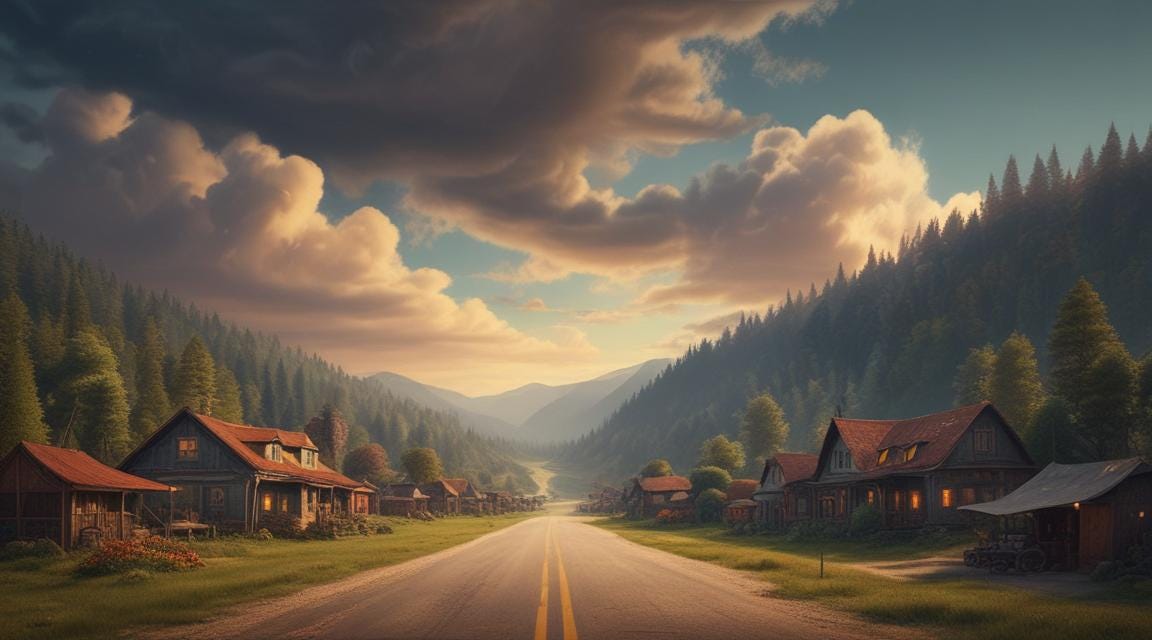by Susanna Holstein (Originally published in Two-Lane Livin’ Magazine, August 2016)
I see many colorful place names as I drive around our state. Many have left me wondering how the name came to be. Like Hoo-Hoo Hollow, near Bluefield, WV. It seems self-explanatory, but surely the explanation could not be so simple.
Actually, it is.
My sister told me that her second husband actually grew up on Hoo-Hoo Hollow. And yes, it was called that because the holler was so narrow you could "hoo-hoo" across it to your neighbor on the other side. Jumping Branch, also in the southern part of West Virginia, got its name because travelers had to jump their horses across the creek before a bridge was built. According to one account, men also jumped their teams of horses across! That would have been something to see.
Then there is Burnt House, a story that many in West Virginia know. According to legend, a slave girl named Delsie came to live at an inn along the Staunton/Parkersburg Turnpike. She and her lover William Davis were accused of murdering peddlers who stayed at the inn. William left with his father when he heard of the arrest warrant out for him, leaving Delsie behind. Delsie became deranged after being abandoned, and one day burned down the inn and herself; she was up in the lookout room on top of the inn, dancing and laughing while the inn burned. After the fire people in the area claimed to see a flame leap from the ground at night on the site of the inn, and to hear Delsie's laughter. The community became known as Burnt House.
Gamble's Run is also named after a ghost. This northern panhandle stream was the site of the suspicious drowning of John Gamble. A man named Leb Mercer was believed to have murdered Gamble for the $200 in cash Gamble was known to be carrying. Gamble's ghost later appeared to a young man and named the murderer. A trial was held but Mercer was let go because the judge said that unless the prosecution could produce the witness-the ghost-there was no evidence to convict.
My own road, Joe's Run, was named after Joe Parsons, who once had a store at the mouth of the road. According to one source, during the Civil War, the store was raided by soldiers (or perhaps by one of the militia groups that were rampant in the area) and all the liquor was poured into Mill Creek and set on fire, burning as it floated down the creek.
Some place names are easy to understand. Sassafras Run, White Oak, Hickory Ridge, and White Pine commemorate our native trees, and Leatherbark in Calhoun County was most likely named after the American Chestnut trees, whose bark was often used to tan leather.
Other names leave strangers to our state wondering: Fork Lick? Big Run? Round Bottom? Burning Springs? We know, of course, that the first two are geographic terms. A fork is a branch of a creek or run. A run is a small stream beginning at a spring usually; one man explained to me that it was a run because "sometimes it runs, sometimes it don't." A bottom is the flat land along a waterway. Burning Springs was named, I am told, for the Confederate raid that destroyed the oil and gas wells there during the Civil War, setting the Little Kanawha River on fire for miles downstream.
Our state has hundreds of names as colorful as the ones I've mentioned here. Do you know a story connected with where you live?



